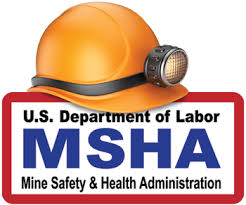
On this day in labor history, the year was 1969.
That was the day President Richard Nixon signed the Federal Coal Mine Health and Safety Act into law.
At least three key events served as the impetus for the legislation.
Beginning in the mid 60s, miners began staging numerous health and safety walkouts across the Appalachian coalfields.
Their working conditions were despicable.
Then, in November 1968, 78 miners were killed in a methane and coal dust explosion at Consol Mine no. 9 in Farmington, West Virginia.
Miners were outraged when UMW leader Tony Boyle provided cover for the company’s murderous negligence.
Then, in January, thousands of miners rallied in West Virginia’s state capitol, along with the Black Lung Association and the Disabled Miners and Widows.
They demanded legislation controlling coal dust and compensating black lung victims.
When the hearings dragged on, 30,000 miners walked out in a wildcat the next month, in what is referred to as the 1969 Black Lung Strike.
By March, the number would increase to 40,000.
The state law passed March 12. Fears of a nationwide health and safety wildcat strike prompted Congress to craft and pass the federal Act.
According to historian Paul Nyden, “the West Virginia Black Lung strike was the longest political strike in modern U.S. labor history.”
The Act created the Mine Safety and Health Administration.
It mandated annual inspections and increased federal powers of enforcement.
The Coal Act also required monetary penalties for all violations, and established criminal penalties for knowing and willful violations.
The Act developed improved mandatory health and safety standards and provided compensation for miners disabled by Black Lung disease. Miners continue to fight for better conditions, enforcement and compensation today.
More Episodes
 2024-06-23
2024-06-23
 2024-06-23
2024-06-23
 2024-06-23
2024-06-23
 2024-06-23
2024-06-23
 2024-06-23
2024-06-23
 2024-06-16
2024-06-16
 2024-06-16
2024-06-16
 2024-06-16
2024-06-16
 2024-06-16
2024-06-16
 2024-06-16
2024-06-16
 2024-06-16
2024-06-16
 2024-06-09
2024-06-09
 2024-06-09
2024-06-09
Create your
podcast in
minutes
- Full-featured podcast site
- Unlimited storage and bandwidth
- Comprehensive podcast stats
- Distribute to Apple Podcasts, Spotify, and more
- Make money with your podcast
It is Free
- Privacy Policy
- Cookie Policy
- Terms of Use
- Consent Preferences
- Copyright © 2015-2024 Podbean.com




